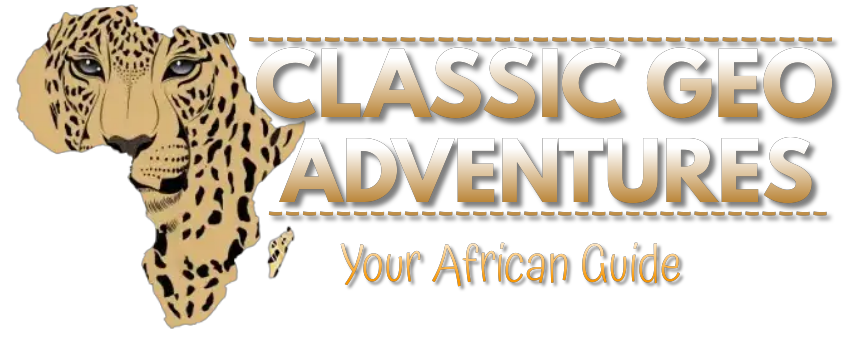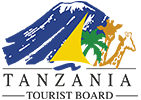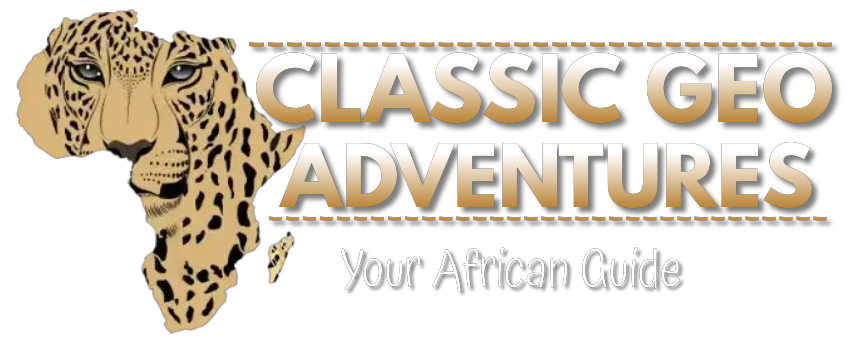Old Tanzania
From the great migration of the Serengeti to the more remote parks, a Tanzania safari offers superb game viewing in a dramatic setting of snowy peaks, volcanic craters, and the Masai steppe of endless plains. Tanzania is renowned for its sheer numbers of wildlife. There are lots of big cats, and hordes of wildebeest, zebra, and Thompson’s gazelle that migrate across the grasslands every year, with dramatic river crossings along the path of this Great Migration.
Few countries can compare Tanzania’s natural beauty and cultural diversity – with Kilimanjaro, Zanzibar, the Serengeti, and the Ngorongoro Crater all in one country. If you’re energetic or adventurous, go on a multi-day walking safari in the Serengeti or Ruaha National Parks or tackle a trek to the top of Mount Kilimanjaro, Africa’s highest peak and the world’s highest free-standing mountain. Don’t miss a visit to the exotic spice islands of Zanzibar for an infusion of aromas and architecture in historic Stone Town.
Beaches of mainland Tanzania
Though beach tourism in Tanzania is centered on offshore islands such as Zanzibar and Mafia, the mainland Swahili Coast hosts a wealth of attractive, off-the-beaten-track seaside destinations.
Incorporating more than 1,000 kilometres of gorgeous Indian Ocean frontage, the Swahili
Northern Safari Circuit in Tanzania
The northern safari circuit is bookended by Lake Victoria and Rubondo Island in the west and Mount Kilimanjaro in the east. To the north lies the Kenyan border with the Masai Mara and Amboseli reserves located just across the frontier. Tarangire National Park is regarded as the most southerly tourist attraction in this diverse and breathtaking safari region. Within a relatively compact geographical area, safari goers will have access to a multitude of other iconic parks and major tourist attractions, including the Serengeti, Ngorongoro Crater, Oldupai Gorge, Lake Natron, Ol Doinyo Lengai volcano, Mount Meru, Arusha National Park and Lake Manyara.
Serengeti to Ngorongoro Crater
The Ngorongoro Crater, originally a massive volcano, is the world’s largest preserved crater. Some say it would have been higher than Africa’s highest mountain, Mount Kilimanjaro before it erupted.
It is now a large highland area with the famed 600-meter-deep Ngorongoro Crater as its focal point, decades after having collapsed and crumbled. The ancient caldera, which is about three million years old, is home to one of the most spectacular wildlife havens on the planet.
An awe-inspiring array of wildlife accompanied by lone Maasai, resplendent in beads and furled in scarlet shuka robes, may be found on the Crater walls and on the floor, fever and fig tree forests give shade for an awe-inspiring diversity of species.
All of the residents’ thirsts are quenched by fresh springs and a big soda lake. Within its border, black rhinos are protected, gigantic, tusked elephants roam the forests, black-maned lions prowl the grasslands, and flamingos swarm the soda lakes.
This bowl of plenty is home to an estimated 25,000 large species, including a population of 6,000 resident wildebeest, 16 critically endangered black rhino, and over 70 lions. Leopards are most typically seen in the beautiful Lerai Forest, while cheetahs travel in and out of the Crater.
Golden and black-backed jackals are common among the smaller carnivores, while the generally cautious and nocturnal serval can be observed during the day. Buffalo, zebra, and Thomson’s gazelle can all be found in large numbers.
The Serengeti Park, which covers 14,763 square kilometres and stretches up to the Kenyan border in the north, is perhaps one of Africa’s most beautiful parks.
The Serengeti region is home to two World Heritage Sites and two Biosphere Reserves and is known for its large open grasslands and exceptional wildlife observations.
The Serengeti ecosystem is one of the world’s oldest, with little change in climate, vegetation, or species during the last million years. There are 35 species of plains-dwelling mammals in the park, as well as a plethora of wildlife.
The Serengeti, which in Maasai means “endless plains,” is located on a wide plateau between the Rift Valley’s eastern arm and Lake Victoria’s great extent. The Masai Mara Reserve in Kenya, which sits across the border to the north, is part of the same Serengeti-Mara ecosystem.
A Serengeti safari, especially during the peak of the Great Migration, is a once-in-a-lifetime experience.
Hundreds of thousands of wildebeest, zebra, and other herbivores traverse the several rivers in the course of Africa’s annual Great Migration every year, risking the jaws of gigantic crocodiles and bearing the continual pressure of lions, hyenas, jackals, and other predators.
Southern Safari Circuit in Tanzania
The southern safari circuit sprawls across southern Tanzania. From the gigantic Selous Game Reserve in the east to Mahale Mountains and Gombe Stream national parks on the shore of Lake Tanganyika in the west, this is wildest Africa and the domain of adventurers and explorers. Between Africa’s deepest lake and the Selous World Heritage Site lie the diminutive Mikumi and Udzungwa Mountains national parks, as well as the impressive Ruaha-Rungwa ecosystem and the beguiling Katavi-Rukwa landscape. For those intrepid travellers who opt for the road less travelled, the alluring southern safari circuit beckons with the promise of genuine wilderness and real adventure.
Highlights
Bisected by the crocodile-infested Rufiji River and home to the world-renowned Stiegler’s Gorge, the 50,000 square kilometre Selous Game Reserve remains an iconic safari destination and long-standing safari highlight of southern Tanzania despite its on-going poaching and hydro-development challenges. Although poaching has ravaged the enormous elephant herds of years gone by, the Selous still supports around 16,000 of these grey giants as well as a thriving population of wild dogs.
One of the largest national parks in East Africa, the 20,226 square kilometre Ruaha National Park is almost unknown outside of Tanzania, yet with an estimated 10 percent of the surviving wild lion population in Africa, it is definitely a highlight on any trip to explore the wild south of the country. Beautiful landscapes peppered with giant baobabs, elephants, abundant plains game and one of the only places you will see greater kudu in Tanzania are further good reasons to make sure Ruaha is on the itinerary of every intrepid safari connoisseur. It is best explored during the long dry season from June to October when the animals congregate near the perennial Great Ruaha River, which – along with the Mwagusi, Jongomero and Mzombe rivers – provide the lifeblood of the park. The banks of the Ruaha are a permanent hunting ground for lion, leopard, cheetah, hyena and even the endangered African wild dog, which prey on the impala, gazelle and waterbuck that come to drink at the river. Whether exploring this large tract of African wilderness by vehicle or foot, Ruaha is a special place to visit.
Wild and remote Katavi National Park is one of the country’s most unspoiled and untouched bush settings with amazing landscapes and rich wildlife. The 4,471 square kilometre park is difficult to access and consequently can be relatively costly to visit. As a result, few people make the effort to come here. While the Serengeti might see 125,000 visitors in a year, the remote Katavi sees no more than a few hundred brave adventurers by comparison. This is wild Africa at its very best and, provided you have the time and budget, it’s a park that’s absolutely worth exploring. With only a couple of small, rustic safari camps, you often come across more prides of lion than fellow safari aficionados on a game drive in Tanzania’s third largest national park. Surrounded by woodlands, two gigantic sprawling grassy plains – Chada and Katasunga – dominate the park and provide a dramatic setting for watching lion-buffalo interactions. During the dry season, the Katuma and Kapapa rivers are the only permanent water in the area and act as a magnet for thirsty wildlife. Hundreds of hippos congregate in the shrinking waterholes and enormous crocodiles sit out the heat inside mud-holes excavated into the riverbanks.
Nestled on the Lake Tanganyika shoreline with its forested mountains rising up from the lakeshore, mesmerising Mahale Mountains National Park boasts stunning scenery and close encounters with habituated chimpanzees. The mist-covered peak of Mount Nkungwe stands sentinel in the background and the crystal-clear waters of Lake Tanganyika lap against white-sand beaches. Without road access, many safari stalwarts regard Mahale as Tanzania’s most remote park, but also one of its most enthralling. The star attractions are the 1,700 chimpanzees that reside within the 1,613 square kilometre protected area, but the holy grail for most visitors is the 60-strong Mimikere or ‘M’ group, which has been studied by researchers for more than four decades. While the M group of chimps are well habituated, finding our closest relatives can be a challenge. Be prepared for some sweaty, steep climbing through dense vegetation, but the trials and tribulations are well worth the end result.
Practical Advice
The southern safari circuit is definitely best attempted during the dry season. Infrastructure is far more limited and basic than you’ll encounter up north. There are also considerably fewer safari camps and accommodation options than the more popular northern circuit, but this is precisely the reason for the southern park’s off-the-beaten-track appeal. It’s also worth noting that there are no roads into Mahale Mountains National Park with visitors having a choice between travelling in by air or by boat.
While most visits to Tanzania’s southern safari circuit are trouble-free, travel advisories are increasingly citing a rise in armed crime. That said, you stand considerably more chance of being injured in a road accident, or getting ill with malaria, or even perishing from a capsized ferry on Lake Tanganyika, so take some sensible safety precautions and you should be fine.
Zanzibar and the Indian Ocean Islands
From the often overlooked and largely undeveloped tropical paradise of Pemba Island in the north to the classy utopia of Mafia Island in the south, Tanzania’s tropical east coast islands offer a welcome respite at the end of a rewarding safari. Nestled between Pemba and Mafia is Zanzibar with its eclectic mix of white-sand beaches, warm water, nightlife and powerful cultural history.
Highlights
The lion’s share of Tanzania’s island visitors gravitates towards world-renowned Zanzibar. Zanzibar has an almost overwhelming choice of over 800 tourism establishments to suit every budget and taste.
It almost goes without saying, but this is not a place you should come to if you don’t want to see other tourists. While some parts of Zanzibar are less intensively developed than others, this island is about as far from a pristine wilderness escape as you can get with almost the entire coastline developed, but most especially in the northeast and southeast.
Zanzibar – an exotic island kingdom of former slave traders and fishermen – has reinvented itself as a tourism hotspot. For those with deep pockets and a healthy budget, nothing beats the exclusive satellite island of Mnemba off the north-eastern tip of Zanzibar. With one exclusive, beyond lodge, Mnemba is the very pinnacle of tropical island beach-chic luxury. Alternatively, there is a dizzying array of hotels, beach resorts, guesthouses and other accommodation options to choose between on the main island.
If the thought of hundreds of hotels and thousands of tourists is not your cup of tea, then a trip to neighboring Pemba is the way to go. Zanzibar’s big brother island has remained a thriving fishing community and surprisingly free of tourism development with only a handful of tourist hotels to choose from, a number of which are in the far north of the island where the underwater honeymoon suite of Manta Resort must be the most unique place you could opt to spend a night!
But the unpretentious Emerald Bay Resort in the south of the island is the traveler’s pick. Delicious seafood meals served on an open-air rooftop terrace and daily boat cruises to lose track of time and spend a week or two recuperating at this affordable island paradise.
Further south lies the idyllic island of Mafia. A touch more sophisticated and exclusive than Zanzibar, but without the Mnemba price tag, this is an exciting coconut-covered island to visit.
The beaches are superb, and its mangroves and marine park ensure that the sea life is bountiful, and the underwater safari experience is far superior to Zanzibar or Pemba where a combination of overfishing and widespread dynamite fishing have devastated the reef and fish stocks.
More out of the way and a little harder to reach, Mafia is the place for adventurous travelers and diving connoisseurs. The star attraction being the docile and completely harmless whale sharks that frequent the island waters between October and March each year. The best place to base yourself on Mafia would have to be the colourful and good value-for-money Butiama Beach.
Practical Advice
It is highly recommended to visit Zanzibar or one of Tanzania’s other Indian Ocean islands at the end of your safari. After lots of early morning game drives and ‘African massages’ courtesy of the often-bumpy roads, some quality rest and relaxation on an idyllic white-sand beach lapped by the warm, azure waters of the Indian Ocean is usually just the tonic and will no doubt prove the cherry on the top of an incredible Tanzanian safari experience.
The quickest and safest way to reach any of the country’s island destinations is by air. With both regularly scheduled flights and private charters flying the aerial island access routes, getting there is simple if a touch costly at times, especially if you want to fly from somewhere outside of the major cities.
For those on a tighter budget or who enjoy sea travel, there are a few ferries that sail daily between the mainland ports and islands of Pemba Island, Zanzibar and Mafia Island. It is, however, important to assess the sea conditions, seaworthiness of the vessel, and presence of safety equipment before boarding a boat for your island voyage.
Big Five Safaris
The Big Five was traditionally used as a hunting term to describe the five most dangerous animals in Africa to hunt. Their reputation has spilled over into the tourism industry and now elephant, buffalo, lion, leopard and rhino remain the most sought-after species to see on the continent.
But they’re not really the most dangerous animals in Africa. In fact, the two species that kill the most people are not even part of the Big Five; they are the tiny mosquito and the lazy hippo. Out of the Big Five, the black rhino is the hardest to find by far, with the leopard coming in at second place.
A sighting of one of these five incredible African animals can change your life forever.
Family Safaris
In today’s digital age, quality time together as a family is more precious than ever. An African safari offers the perfect escape – a chance to bond away from endless screens. On a Family Safari tour, the wildlife is a unique playground and schoolroom wrapped in one adventurous package.
Choose from a wide range of family safaris, such as the mighty wildebeest migration in Kenya’s Masai Mara or the Gorilla trekking in Uganda and Rwanda and many more. Africa offers thrilling adventures for the whole family.
From roaring lions spotted on game drives to crackling campfire tales under starlit skies, an African holiday is the gift of time together. Safaris reconnect us with the beauty of the natural world and each other. So leave the gadgets behind and treat your family to a magical adventure that everyone will cherish for a lifetime.
Big Cat Safaris
People come from all over the world to see lion, leopard and cheetah – the biggest felines on the African continent. A safari is hardly complete without seeing at least one of these amazing predators in the wilderness. When searching out the big cats, it’s also important to look out for the smaller yet equally fascinating serval and caracal.
Seek out these incredible predators in their natural environment.
Birding Safaris
Africa is rich in birding opportunities, for beginners and professionals alike. The Albertine Rift, just south of the Zambezi River, for example, is rich with endemic birds, while Tanzania, Ethiopia and South Africa contain the highest number of endemic species of all the African countries.
Discover the amazing and diverse birdlife on the continent.
Kilimanjaro Climbing Tours
If you’re looking for an exhilarating challenge, Mount Kilimanjaro is waiting for you. With your trust placed firmly in your guide’s hands, you’ll have to push through the highs and lows of an intense journey during which temperatures can drop to -20°C. Climbing Mount Kilimanjaro offers Africa’s ultimate challenge to test your gear, your guide and your mental and physical fitness. Your mission? To reach the summit at Uhuru Peak. Are you prepared to take on the continent’s tallest mountain?
A steep ascent, an endurance-testing adventure and a beautiful location
Honeymoon Safaris
Planning your luxury African safari honeymoon tour can be a truly special experience. With so many romantic accommodation options, like quiet camps in the Serengeti or the beautiful Okavango Delta, you can find the perfect setting for your first trip as a married couple.
A honeymoon in Africa is unlike any other because it combines the best of both worlds: luxury and adventure. Africa is not just about safaris; you can also relax on the continent’s beautiful beaches and islands or fly in a hot air balloon over the plains to see the beauty of nature from above.
Going on a luxury honeymoon in Africa is more than just a regular trip. It’s a chance to make lasting memories. Whether you’re looking for an adventurous safari or a peaceful time by the sea, Africa offers a beautiful and intimate setting. It’s a great place to start making those first memories as newlyweds.
Tanzania in January
Tanzania experiences two rainy seasons and two dry seasons: the short dry season runs from late January to early March, and the long dry season from June to October. In between are the short rains of November to January and long rains from late March to May with April being an extremely wet and challenging month to get around.
The country’s parks and attractions are at their busiest during the long dry season months of June to September with July and August (European and American summer holidays) being the most hectic. The shoulder season months of May and October/November, as well as the short dry season in February and early March, offer exciting alternatives and are recommended times to explore Tanzania.
Many visitors to Tanzania want to coincide their visit with seeing the migration, but it is worth noting that you can view the migration during any month of the year – you just need to travel to the appropriate area within the greater Serengeti ecosystem to find the wildebeest herds.
January marks the end of the short rains and tends to be quite green and wet. The lush, green vegetation looks fantastic at this time of year with migrant birds bolstering resident populations. January is a good month for ornithologists, as well as those safari goers who place scenery and solitude over wildlife abundance and safari companionship. For the migration, head to the southern plains of the Serengeti to coincide with the wildebeest calving season.







